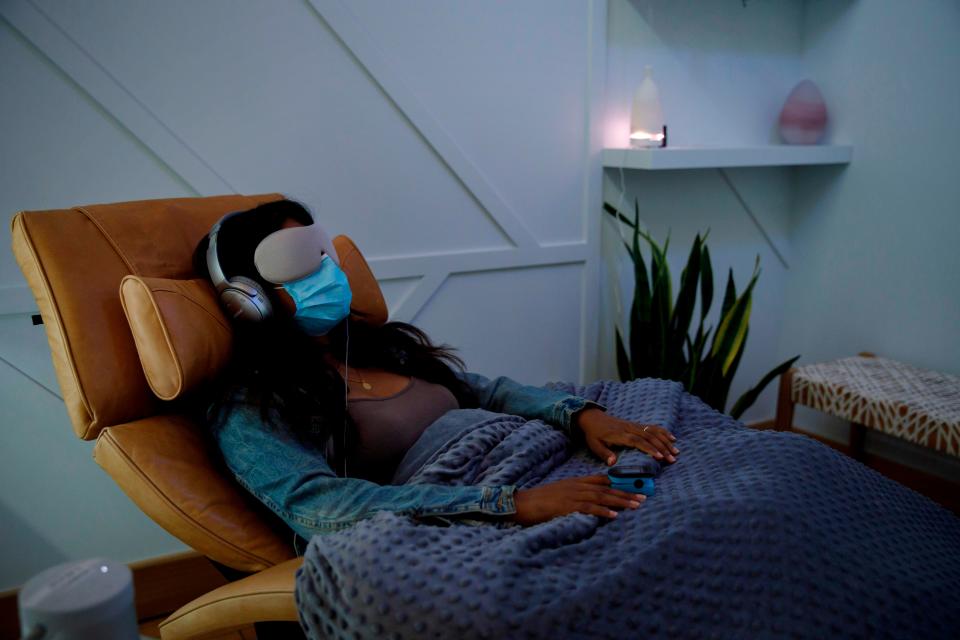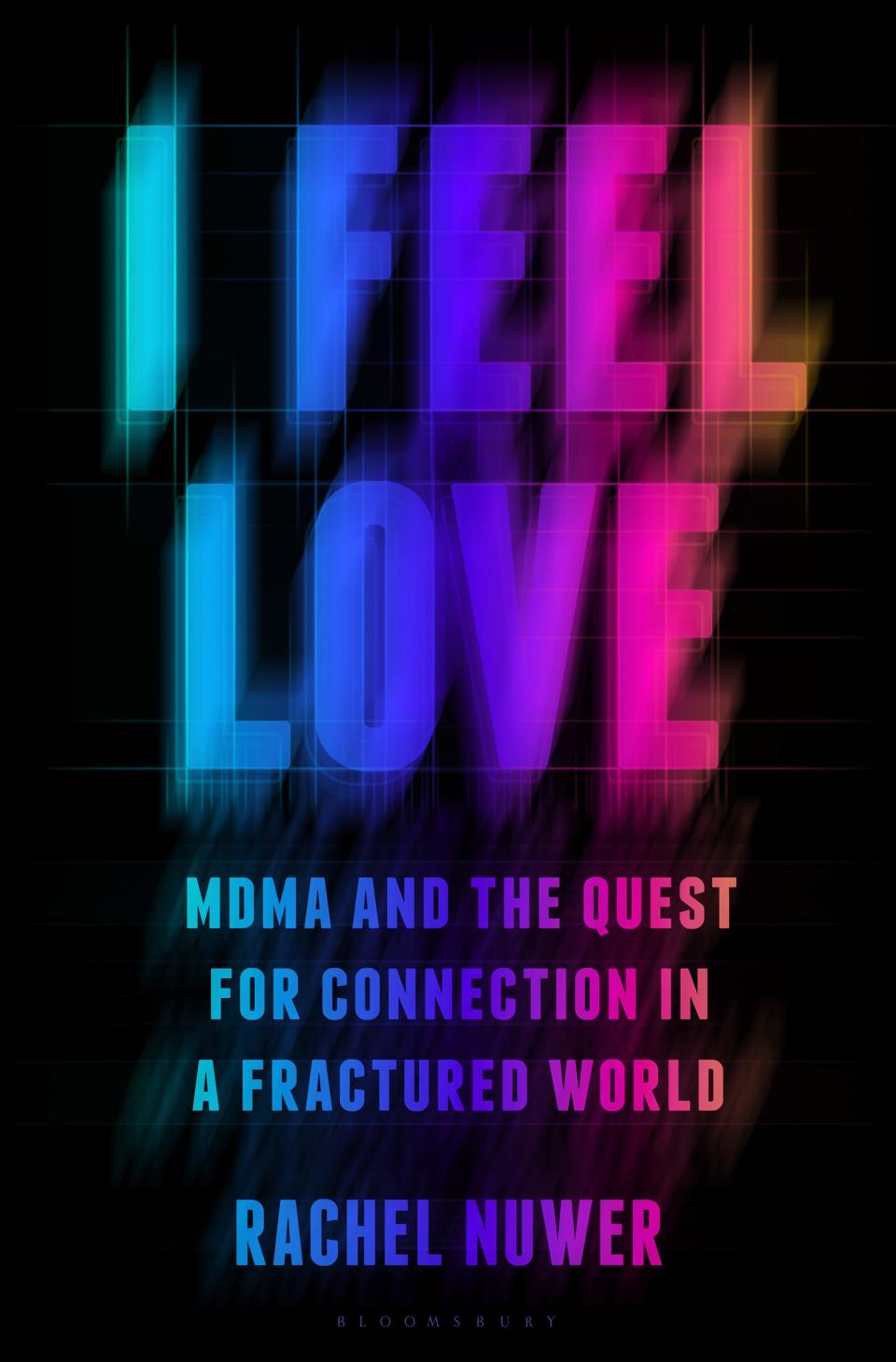-
MDMA, a schedule I drug, has attracted attention for its potential use as a therapeutic drug.
-
Researchers have used it to successfully treat depression, PTSD and more.
-
Rachel Nuwer tells how therapy helped a veteran overcome PTSD in her book, “I Feel Love.”
Psychedelic therapy seems to have gone from fringe experimental treatment to mainstream acceptance overnight. That is, in part, thanks to the many stories of how it has successfully helped treat conditions like PTSD.
In her new book “I Feel Love,” author Rachel Nuwer tells the story of Vietnam veteran John Reissenweber, whose time in the service changed his personality and left him isolated from everyone in his life. civil life.
The following is an excerpt from Rachel Nuwer’s new book, “I Feel Love: MDMA and the Quest for Connection in a Broken World.“
John never considered that he might have any problem, and he certainly never thought that he might have PTSD. “Oh, no! To have PTSD, you’re weak,” he said of her past thoughts.
He didn’t apply to the VA for benefits he was entitled to for his ruptured eardrums because “I didn’t need any help from anybody,” he said. “There was no need for me to be told that I was disabled, because I came back with ten fingers and ten toes and no others.”


In 2003 John’s life changed for the better when he met Stacy Turner, his current wife. They connected online, and the first time he saw her in person, he exclaimed, “My god, you’re so beautiful!”
“How can you not love a man who says that to you with all this heat in his eyes?” Stacy said. “John liked me so much, and I felt that way about him, too.”
Things were great for half a year or so, but then Stacy began to “see the cracks,” as she put it. One beautiful evening, they were sitting on a blanket in a wooded part of Glen Canyon Park in San Francisco, having a picnic, when Sean’s mood suddenly changed. He began scanning the area and became “cold and distant,” Stacy recalled.
“Then he starts talking about strategic and vulnerable positions and where you might worry about firefights and where people might be hiding. I looked at him, and I was like, ‘He’s fucking back in Vietnam.’ I corked the wine, packed up, and said ‘We’re going home, this is not a good place for you to be.'”
Stacy loved John, but the stress and strain of tiptoeing around his mind took a toll over the years. “No matter what I said or did, there was a chance it was wrong, and if it was wrong, the results were disastrous,” she said.


Twice, she kicked him out, but they always came back together. Finally, Stacy told John that he needed to get professional help, or she was done. A psychiatrist diagnosed him with PTSD, but the talk therapy wasn’t improving things. One day his psychiatrist gave him a copy of “How to Change Your Mind” by Michael Pollan and told him about the MAPS MDMA trials.
“I had a very strong fear of mind-altering drugs, because by this time I knew I was wrapped up tight,” John said. “I was afraid if I did anything I would come undone.”
Stacy and John’s doctor convinced him to enter the trial anyway. But when he underwent a PTSD evaluation to see if he qualified, he returned to his old habits to ease his symptoms.
“I lied to myself again, as I have done all my life since I came back from Vietnam,” he said. It worked: shortly after taking the test, he received a polite letter saying he did not meet the criteria for the study.
Stacy didn’t have it. She contacted Gregory Wells, a psychologist who co-led the San Francisco trials, and asked him to take a closer look at their evaluation process.
“If you fired John because of high blood pressure, I would understand,” she said. “But if you fired him because you thought he wasn’t messed up enough, you just missed the boat and it completely snowballed on you.”
Stacy’s letter did the trick. In August 2019 John came to Wells’ office for his first MDMA-assisted therapy session. “I felt a mixture of scared shitless and determined,” he said. “I would have found the point where I realized that maybe there is something to this, maybe I have some PTSD. And maybe this can help.”
Lying on the day bed with headphones and eye shades on, it didn’t take long for John to “realize something was going on,” he said. He felt very affected by the music and ungrounded in his own body. Suddenly, a vision appeared in his mind.


He was standing on a lunar plane reminiscent of the Apollo 10 “Earthrise” photo, with stars all around. In the lower left hand corner was a dark pit, which John chose to ignore.
He focused instead on a drop of liquid-like energy in front of him, which John realized represented his collective consciousness at the time of his birth. “Everything was nice, calm, serene,” said John. “I felt a connection to everything.”
However, when the second drop materialized and hit the ground, John heard helicopters, gunfire, and shouting—the disruption of Vietnam that made his psyche. Although John’s therapists were “really wonderful,” he said, he kept quiet. “I didn’t want to talk about it with anyone,” he said. “I was doing it on my own.”
In the month after that first session, Seán felt more relaxed than he had in years. He could be walking outside and enjoy the breeze on his skin. He could have a conversation with Stacy and imagine what she was thinking and feeling.
John began his second session of MDMA-assisted therapy, eager to see what other benefits it might offer. Immediately, his mind took him back to the same lunar landscape. The dreaded black hole was still there, but it focused entirely on the first fall, and the second fall never came.
All day he lay on the couch, hugging himself, rocking back and forth, and petting a dog that one of his therapists had brought him. “I was taking care of that child myself,” he said.
After his second session, for the first time, John began to remember his dreams. A few days before the third and final session, however, he had a terrible nightmare: he was in military clothes, afraid of death, as the sounds of mortar explosions disturbed him.
He was scared, and went into his last MDMA session determined to tackle the black hole in the corner. “You can’t shy away from it anymore,” he said to himself – and jumped right in.
He thought he would get through — “as Pollan’s book said, ‘going into the light,'” he explained — but he got “completely and completely stuck.” Seán spent the rest of the session trapped in the pit, unable to move.
The next morning, his whole body was sore. When he arrived at the therapist’s office for his integration session, he was too scared to go back into the room. He knew he needed more help than the limited clinical trial could provide, so he found a new therapist.


With her guidance, he realized that the black hole represented the anger and hurt he felt from Vietnam. That revelation allowed him to examine his life anew, pulling memories, one by one, like a set of file cards that he could rearrange into a cohesive whole.
Although the MDMA-assisted therapy alone did not cure John, it was “like an electric shock to the system,” he said. It showed his hurt and concern, and more importantly, it showed him that he was entitled to feel that way.
“It was like a complete and total rebirth,” he said. “It gave me the ability to look at myself and say, ‘You know, you don’t have to be perfect, you don’t have to be right, it’s okay to be who you are.’ Without it, I could have taken all the cognitive behavioral therapy in the world and nothing would have happened.”


John continued with traditional therapy and is also involved with the VA, where he connected with other veterans. In October 2021 he began volunteering with a VA program aimed at rehabilitating veterans through golf.
He no longer feels like he’s “running at 100 percent” all the time, he said, and he’s not bothered by the inevitable little obstacles that everyday life throws his way. Most importantly, he was able to bond more deeply with Stacy, whom he calls his guardian angel.
“I can talk to Stacy,” he said. “I’m not afraid to do that anymore.”
From I Feel Love: MDMA and the Quest for Connection in a Fractured World is out now from Bloomsbury Publishing. Copyright © 2023 by Rachel Nuwer. All rights reserved.
Read the original article on Business Insider